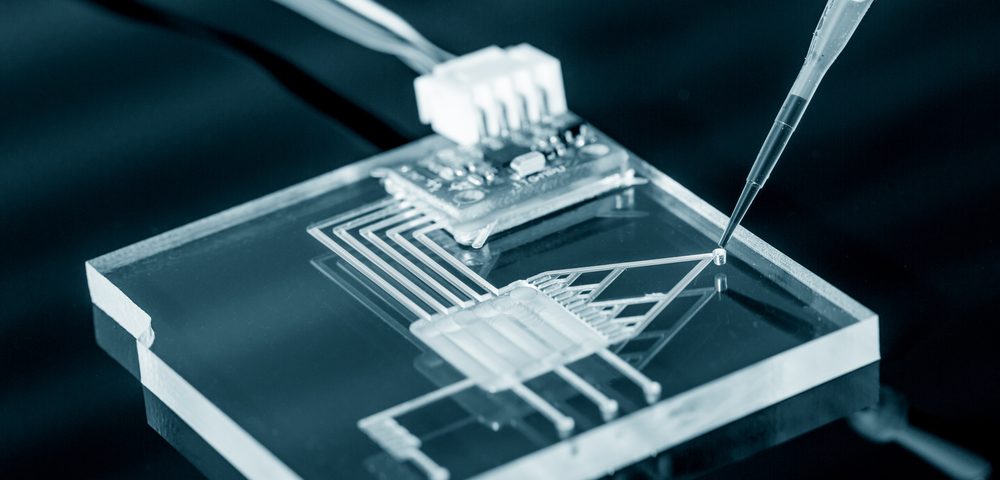A new nanotechnology method can easily and quickly detect genetic changes in tissue samples. The innovative method developed by researchers from the Swiss Nanoscience Institute at the University of Basel and the University Hospital Basel is in clinical tests with genetic mutations in patients with malignant melanoma.
The study, published in the journal Nano Letters, is titled “Fast Diagnostics of BRAF Mutations in Biopsies from Malignant Melanoma.”
According to the American Skin Cancer Foundation, there are more new cases of skin cancer than the combined incidence of cancers of the breast, prostate, lung, and colon each year, and malignant melanoma represents its deadliest form. About 50 percent of all cases are characterized by a particular mutation in the BRAF gene, which leads to uncontrolled cell proliferation
Recently developed highly specific drugs that are able to fight BRAF-mutated tumors, significantly extending patients’ life expectancy, but require diagnostic tools for fast and reliable detection of the gene mutation.
If the diagnostic tools are not accurate in detecting the genetic mutation, some patients that actually have the BRAF mutation may not receive the appropriate treatment, while others who don’t have the BRAF mutation may be receiving unnecessary treatment that could give them severe side effects without producing the desired effect.
“It is therefore essential that we are able to identify the mutations reliably in tissue samples. That is the only way of ensuring that patients get the right treatment and successful outcomes,” the paper’s co-author, Prof. Katharina Glatz of the Institute of Pathology at University Hospital Basel, said in a news release.
In the pilot study, the team of researchers used nanosensors to detect the genetic mutations in tissue samples from patients with malignant melanoma. They used tiny cantilevers that were coated in different ways, with some carrying a recognition sequence for the mutation the scientists were targeting.
The researchers then isolated the genetic material (RNA) from the patients’ tissue samples and applied these to the cantilevers. If the genetic change is present, the patient’s RNA binds to the recognition sequence on the cantilever.
The resultant surface stress leads to bending of the cantilever, which can be measured. But if there is no mutation in the RNA sample, the cantilever doesn’t bend. The time from performing the biopsy to diagnosis is less than one day.
Researchers discovered that the nanomechanical microcantilevers could not only detect the BRAF mutation but also other types of genetic mutations involved in tumor initiation and progression in complex mixtures of total RNA isolated from patients’ tissue samples. Knowing what mutations are present within a tumor may help guide clinical decision-making in these patients.
“Thirty years ago, we weren’t able to foresee that our technology might one day be used in hospital for personalized medicine — ‘from the bench to the bedside,’ as it were,” said Prof. Christoph Gerber from the Swiss Nanoscience Institute and the Department of Physics at Basel University.


